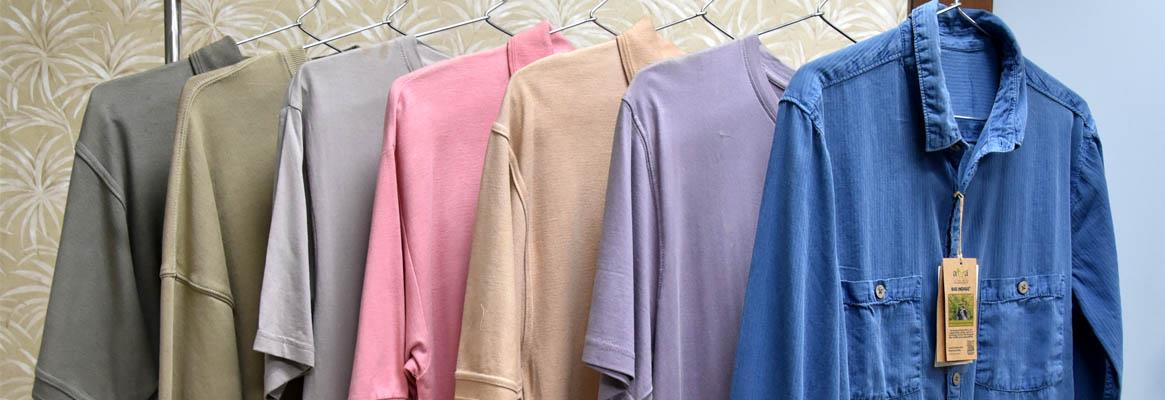Garment dyeing is one of the most popular forms of dyeing shirts, t-shirts, trousers, pants, dresses, pullovers, tops, etc. AMA has been working towards the commercialisation of natural dyes and have successfully innovated a specialised range of auxiliaries, dyeing without temperature at room temperature, fast processing with 4 to 5 hours of process dyeing (the process is under patent). This is successfully accepted, commercialised, and in practice by many large dyeing units across the globe. Rope dyeing consumes the largest amount of natural dye, and natural dyes are most successful in garment dyeing when it comes to exhaust dyeing.
A Historical Display of Dye Usage and Invention

AMA Herbal is Empowering the Roots of Garment Dyeing
With the development of garment dyeing with AMA natural dyes, the perception that natural dyes are not possible to be used in large scale production of garments is completely ruled out. The dyeing process is simplified with a scientifically upgraded process that eliminates the traditional step of the mordanting process from natural dye. This means the use of higher percentages of metallic content is completely taken off from the process making this processing even more sustainable.
With this upgraded process, all machines used in garment dyeing can be utilised in the dyeing of the garment with natural dyes without any changes and no extra expenses are required in upgrading machines to meet the requirement.
In this article, we wish to articulate the methods of dyeing in brief, and the benefit of dyeing with natural dyes over synthetic dyes.
Cotton doesn’t have a good affinity towards natural dyes, therefore, we first require enhancing its affinity by installing a cation on the fibre. We do it with our own specialised auxiliaries which are the combination of technologically upgraded certain synthetic and certain natural ingredients.
After this first process of around 45 minutes, the next process is the process of dyeing that is done at room temperature for about 45 minutes again, then you rinse it and use the fixatives after that. So, this is the flow:
Pre-Processing ➡️ Dyeing ➡️ Fixatives
• It is altogether about 4-5 hours of dyeing time.
• No temperature is used at any stage.
• Water consumption is also less than reactive dyes because the number of processes is less.
• Heat consumption is also less because there is no requirement for heating, and that is how the process saves heat energy.
• The effluent discharged is far superior in quality to the effluent discharged from the reactive dyes.
• In this process of dyeing, it can be dyed at 1:3, 1:4, and 1:7. At some places, few renovations have happened where people can dye it even 1:1 in the nebulisation process. So, if a reactive dye can perform at a lower Material Liquor Ratio (MLR), natural dyes can do the same if the machine is capable of doing it.
Here is the Comparative Analysis based on Water Consumption, Dyeing Time, Heating process, and Heat energy consumed

Physiological Parameters of Textile Dyeing Effluents collected from Different AMA Natural Dyeing Processes and Reactive Dyeing Process

affordable when the cost of processing charges in terms of steam, water, machine engagement time is considered, the gap reduces and the final impact on the garment cost is not as much as it is seen as a myth, but affordable.
These facts would strengthen your belief in preferring natural dyes for garment dyeing. It will provide a multifold advantage for your initiative and contribution towards ecological harmony by bolstering the roots of sustainability.
AMA Herbal Laboratories Private Limited is an India-based manufacturer and exporter of extract form of natural dyes for textile industry and herbal products. The company relies solely on environmental savvy practices and promotes people’s better life, better future and healthy living today, tomorrow and forever through its natural and herbal products.













Comments